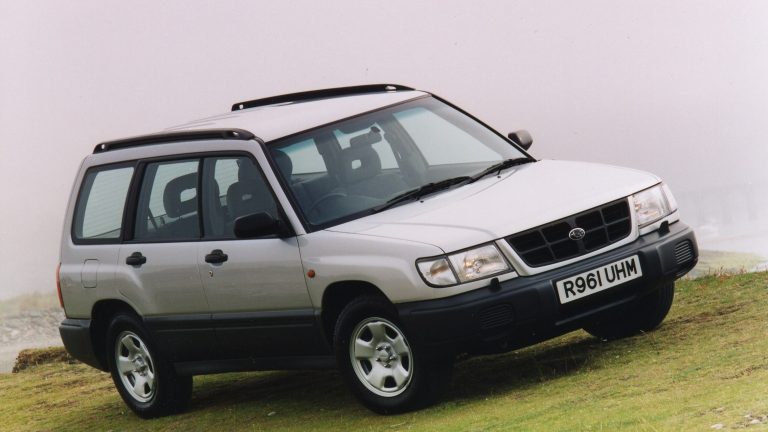[su_image_carousel source=”media: 50889,50890,50891″]
Introduction
Subaru’s EJ20J engine was a 2.0-litre, horizontally-opposed (or ‘boxer’) four-cylinder petrol engine. This article considers the naturally aspirated, EJ20J Phase I engine as it was supplied in Australian-delivered vehicles, including the 1997-98 Subaru SF Forester.
[su_table responsive=”yes”]
| Model | Engine | Trans. | Power | Torque | Years |
|---|---|---|---|---|---|
| Subaru SF Forester | 2.0-litre petrol F4 | 5sp man., 4sp auto |
90kW at 5600rpm | 176Nm at 3600rpm | 1997-98 |
[/su_table]
EJ20J block and crankcase
The Subaru EJ20J engine had an aluminium alloy block with 92.0 mm bores – with cast iron dry-type cylinder liners – and a 75.0 mm stroke for a capacity of 1994 cc. The cylinder block for the EJ20J engine had an open-deck design whereby the cylinder walls were supported at the three and nine o’clock positions.
The crankcase for the EJ20J engine had five main bearings and the flywheel housing was cast with the crankcase for increased rigidity.
Cylinder head and camshaft
The EJ20J engine had an aluminium alloy cylinder head with cross-flow cooling and a belt-driven single overhead camshaft (SOHC) per cylinder bank. Due to the cylinder head offset, the left camshaft was longer than the right camshaft to align the cam belt sprockets. Both camshafts were driven by a single belt which had a round tooth profile for quiet operation and was constructed of wear-resistant double canvas and heat resistant rubber materials with a wire core. Furthermore, the timing belt had an automatic tensioner which allowed for thermal expansion and contraction.
It is understood that the head gasket for the EJ20J engine were of carbon composition with a metal hooked core, while O-rings were used to seal the oil passages. To improve sealing characteristics, the entire gasket surface was silicon coated.
To improve intake and exhaust flow, the EJ20J engine had ‘Siamesed’ intake and exhaust ports.
Valves
The EJ20J engine had four valves per cylinder. While the intake valves had individual rocker arms, a siamese rocker arm was used for each two exhaust valves. The all-aluminium rocker arms had a sintered metal slipper as the cam contact and a pressed aluminium bushing was used for each rocker arm bearing surface.
The position of spring washers on the steel rocker shaft maintained rocker alignment and spacing. Furthermore, the rocker shaft provided oil flow to the rocker bearing surfaces and hydraulic lash adjusters (HLAs). Relief valves at both ends of the rocker shafts maintained stable oil pressure for the hydraulic lash adjusters.
Injection and ignition
The EJ20J engine had multi-point fuel injection and centrally located spark plugs; the injection and firing order was 1-3-2-4. Furthermore, the EJ20J engine had cast aluminium alloy pistons and a compression ratio of 9.7:1.



